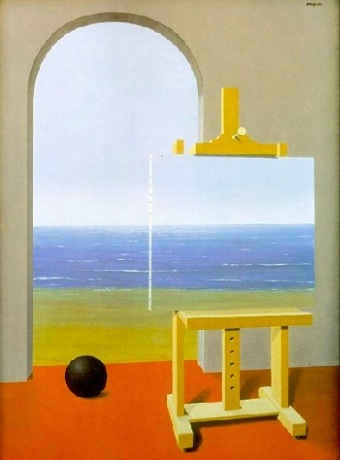Wondering Where the Lions Are
Bruce Cockburn
Ennui
 Composition with Yellow, Blue and Red
Composition with Yellow, Blue and Red
Piet Mondrian
http://en.wikipedia.org/wiki/File:Mondrian_CompRYB.jpg
There was an article recently in the New York Times, “Our Boredom, Ourselves,” about boredom. Fredrick Nietzsche said that “Boredom is a necessary precondition to creativity” and perhaps there is truth in this. The article suggests that boredom is hard work and that when we are doing nothing the creative centers of our brains are hard at work imagining things, being, as Nietzsche suggested, creative. The song is about finding “ecstasy,” overwhelming joy. That joy is found in simple experiences of the natural world, watching waves or smelling the trees in a forest. Perhaps boredom is represented by the lions that do not frighten him so much anymore.
The paintings by Mondrian are found boring by some because not much seems to be happening and even after close study and scrutiny some still find the paintings boring because they just aren’t to everyone’s taste. This suggests other aspects of boredom that have to do with the cultivated mind and individual likes and dislikes. Many do not like opera the first time they hear it, but many that did not like opera on a first hearing go on to become quite enthusiastic about it once they have learned something about how it works and are exposed to the music as performed by those that know how to perform it well. For many opera is something you grow into and perhaps the same is true of Mondrian’s paintings, they need to be grown into.
Of course it must be remembered that one can like opera without liking all operas and perhaps the same is true with painting, that one can enjoy some abstract paintings without enjoying all abstract paintings. The issue is not one of exposure so much as not having a taste for certain things and this is true of people with the most cultivated tastes. There are of course others who feign an interest in something because they are trying to impress others. No one, whatever the stage of cultural development they live at, enjoys everything. Out tastes are defined as much by what we do not like as they are by what we do like.
 The Piet Mondrian – Nike Dunk Low SB
The Piet Mondrian – Nike Dunk Low SB
http://www.kicksonfire.com/2008/04/26/piet-mondrian-nike-dunk-low-sb-available/
On the other hand it is difficult to know what will excite people and some things, like a Mondrian painting, that might bore a person if they were encountered in a museum might excite that same person if they were found on a tennis shoe. If we are attracted at all to the Mondrian painting it is probably the design that we find attractive and the design does not have to be found solely on a canvas to excite our interest, in fact a design that does not attract us in one venue may attract us in some other. As with fine dining, presentation is an important part of design.
I suppose the whole issue of what is art and why we ought to appreciate it is at the heart of boredom. There are aspects of culture that we feel guilty for not appreciating and other aspects of culture for which we feel the need to suppress our appreciation. In some parts of the world sports are at the heart of one’s cultural experience in others it may be the ballet. But in any culture there are things folks feel compelled to know and other things that are more discretionary. In America it is more acceptable, I suppose, to be bored at the opera than at a football game.
 The Human Condition
The Human Condition
René Magritte
http://en.wikipedia.org/wiki/File:The_Human_Condition_1935.jpg
This painting plays with the idea of art imitating life to the extent that it is difficult to see where “life” ends and the painting begins. But is it the purpose of art to imitate life. I remember reading somewhere that E. B. White (writing under a pseudonym) once said that “art should not only “not” imitate life, it had better be a helluva lot more interesting.” I do not know if I remember correctly and I have not been able to verify the quote anywhere, still the quote is apt. A work of art may be true to life, but to keep the work from boring its audience the artist is selective about what is put into the work and what is kept out.
 A Young Hare
A Young Hare
Albrecht Durer
http://en.wikipedia.org/wiki/File:Durer_Young_Hare.jpg
The choice of what to put in does not need to be “exciting in and of itself, it just has to have a quality about it that holds our interest. A painting of a rabbit could be maudlin or “cute” but it can also been done from life and catch our interest. The rabbit in the painting seems a serious fellow deep in thought. I think what attracts me is the level of realism, the texture of the fur, the facial expression, the tension in the body. But the point is simplicity is often exciting and capable of holding our interest. Perhaps the ability to find pleasure in simple things is an essential life skill, one that frees us from all the busyness and activity that goes on around us. Often what makes a good reader is the ability to see beyond the plot of a story, to see the well drawn details that help establish the reality of the story without contributing that much to what happens in the story. In some stories (Hardy’s Tess of the d’Urbervilles comes to mind) the scenery and the weather and the “actions” of the natural world reinforce or give insight into what is happening inside the characters.
I think that we read stories, poems, plays, and essays (and whatever else that is out there requiring us to decipher symbols on a page) to help us answer questions about life and how to live it well. Perhaps we become bored with a story when it stops answering questions that are relevant to our own existence. A story may be a good story for others without being a good story for me, or it may not be a story I need for this stage in my life. There was a review in the Guardian recently of a new biography of Michel Montaigne, “How to Live: A Life of Montaigne in One Question and Twenty Attempts at an Answer by Sarah Bakewell.” Montaigne’s life was radically changed by an encounter with death. He lived in a time when death was a much more common occurrence than it is for us, at least on a personal level. And, as is often the case with things we have in abundance, he took death for granted, until he had his accident.
 Michel Eyquem de Montaigne
Michel Eyquem de Montaigne
Thomas de Leu
http://en.wikipedia.org/wiki/File:Michel-eyquem-de-montaigne_1.jpg
Montaigne went on to invent the essay (well he didn’t really invent the essay so much as give it a name). He used the form to answer questions, how should we live, what should we do with the time that we have? Primarily, he thought, we need to stop worrying about death. But he also thought we should read more, though not remember that much of what we read (we must wade through a lot of nonsense I suppose before we find things of real value), take things slowly, be curious. His essays help us understand friendship, the importance of learning from the experience of others, and knowing the difference between those that would deceive and those who can be trusted. But can someone find these essays interesting if she or he is not already aware of the importance of coming to grips with the issues the essays address. Often what bores us is not the work itself, but our own immaturity that blinds us to the need to confront the problems the work confronts.
The Snows of Kilimanjaro
20th Century Fox
This clip from the film The Snows of Kilimanjaro raises another issue of story telling. How does the storyteller make a static scene interesting? I suppose this is an especially serious problem for the filmmaker. How do we hold the audience’s interest in a man in bed who is slowly dying? A large part of the responsibility falls on the actors who must capture the audience almost solely with their words and the emotions that can be packed into the words. What we watch, I imagine, is the behavior, is it true, is this how a person would act and speak and “be” under these circumstances? Because under the surface of the action, such as it is, is the same question Montaigne raises, how do we face our own mortality without “worrying about death.” If a scene like the one in the film is boring, it is either because we do not feel our own mortality or because the actors failed to convince us they were confronting their own.
In a good story it is not the action entirely that holds our interest. A good story, for me anyway, is one we can come back to and read again and still draw something from the experience. Where all a story has to offer is a plot, a series of events, unfortunate or otherwise, there is nothing to hold our interest on a second reading. If the action of the story is presented exceptionally well it may succeed in arousing our interest on one or two more readings, but once we get to the point we can “tell the story” to ourselves without needing the book there will be nothing left to draw us back in.
But in a well told story where real questions of human existence are being confronted, where the characters confront these questions in a meaningful and honest way, there will always be something to hold our interest. We are not reading because we have been captured by what people do but because we have been captured by the people themselves and they hold us, at times perhaps, against our will.